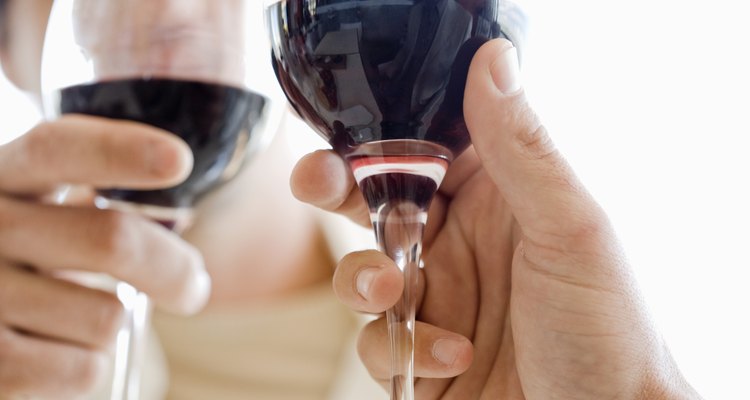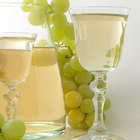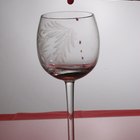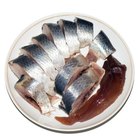
Jupiterimages/Goodshoot/Getty Images
Wine tasting is a highly subjective art. Different varietals appeal to tasters for different reasons. For instance, if you prefer sweet white wines, an inexpensive Riesling may taste better to you than a high-quality Chardonnay. However, there are some general characteristics of good wine, which with practice and experience you may learn to discern in any vintage that you quaff.
Excellent Vintage & High Grape Quality
In general, the best wines come from the best quality grapes. Many types of wine grapes are grown all over the world, and the climate of a particular region can have an enormous effect on the taste of the finished wine. For instance, a California Merlot will taste quite different from a French one. This is why some regions are famous for producing great examples of certain wine varietals. Weather also strongly impacts the quality of a given wine—this is why some years (or vintages) of a particular wine are considered better than others. If a vineyard has been cursed with poor weather, the resulting wine may be equally poor, as excessive rain, hail or sun may cause the grapes to develop badly—or even rot. If you are interested in a wine, check to see which year(s) produced particularly fine vintages—and which did not. You should also check to see where the wine is from. Spanish Riojas are famously delightful; Oregon Riojas aren’t.
No Faults
Even wines made from high-quality grapes may have faults that make the wine borderline undrinkable. Faults are caused by mistakes made in wine-making. Common faults include barrel taint, poor corking, excessive acetic acid, over-oxidation, over-sulfuring and hydrogen-sulphide. Barrel taint is caused by wine being stored in unclean barrels. It causes wine to taste musty. Incorrectly corked wine will also taste musty and sour. Wine containing excess acetic acid tastes vinegary, while wine that has been over-oxidized (i.e., exposed to too much air) is discolored and smells like sherry. Sulfur is sometimes used as a disinfectant in wine-making, and excess sulfur may destroy the aroma of a wine, causing it to smell like burnt matches. If wines have been incorrectly fermented or racked, they may smell like bad eggs, which is a result of hydrogen-sulphide. A good wine will never have any of these faults.
Balance & Complexity
Good wines not only taste pleasant; they also exhibit rounded, intricate flavors. When examined in the context of its type (you should never expect a Beaujolais Nouveau to taste like a aged Cabernet Sauvignon), a good wine should display not only the signature characteristics of its variety but also a personality of its own. Tannins and acids should be balanced between sweeter, deeper flavors, producing a whole that is more than the sum of its parts. A wine’s complexity is judged by the number of flavors and notes that one can find in it, and is considered an important mark of quality.
Fragrant Aroma
Another important marker of wine quality is a heady aroma, or “nose.” While a few good wines have bad noses, and vice versa, in general a wine’s aroma is a safe predictor of its excellence (this is why some wine drinkers request to sniff the cork when ordering wine in restaurants). Aroma actually plays a significant role in how we experience flavors, and so a wine’s aroma can significantly enhance our drinking experience. Before drinking your wine, swirl and sniff it. The better it smells to you, the better it will taste.
Good Scores & Reviews
The scores and reviews for a given bottle of wine may also help guide you in determining if it is right for you. In addition to the many online wine databases that contain thousands of expert and amateur wine reviews, there are also a number of esteemed wine critics who both review and score wines. Magazines like Wine Spectator and critics like Robert Parker and Jancis Robinson provide ratings and descriptions for many wines, which can be very helpful for the novice oenophile.
Related Articles

How Long Should a Wine Collector Keep a ...

Types of Bacteria in Wine

Why Does Wine Not Expire?

How to Determine if Wine is Sweet or Dry

Types of Amber Wine

Sauterne Wine Substitute

Wines to Serve With Cajun or Creole Food

Is Cabernet Sauvignon a Substitute for ...

What Wine Do You Pair With Chinese ...

What Is the Primary Difference Between ...

What Wine Pairs With Chicken Alfredo?

How Long Can a Bottle of Vodka Last ...

Why Is White Wine Turning Brown in a ...

Herring in Wine Sauce

How to Enjoy a Chianti Wine

Should I Store Red Wine Horizontally or ...
What Temperature Should You Serve ...

What Is the Difference Between Wine & ...

How to Use Bentonite for Clearing Wine
The Calories of Pacifico Beer
References
Writer Bio
Emily Maggrett has been writing for more than eight years. Her fiction has appeared in "Jeopardy" and "Rivet" and her journalism has appeared in "The Cascadia Weekly" and "The Western Front." Maggrett holds a Bachelor of Arts in English literature from Western Washington University.
Photo Credits
Jupiterimages/Goodshoot/Getty Images